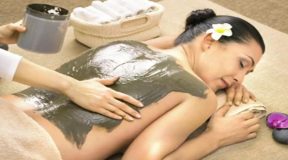Tooth injuries during childhood are very common, and almost 50% of children experience some tooth injury according to pediatric dentists in Stafford. Although many of these injuries happen due to some rash action of the child or while playing and are preventable, it is hard to avoid. Even injuries to the mouth are quite rampant. Most injuries can happen while playing, from a fall or fight or some motor vehicle accident.
Sometimes children try out some unusual activities which can hurt them and injure their mouth or teeth. Although most of the injuries are not life-threatening, the discomfort and pain might force you to seek dental emergency treatment in Grand Rapids. It will comfort the child and relieve pain while healing the damage with proper treatment.
How parents can make the right decision
First, examine the nature of the injury to understand the condition and how much it affects the child. Ask your child to describe the problem with respect to discomfort and pain; see whether there is any bleeding try to use some first aid to stop it. If the child experiences sensitivity of the affected tooth, pain, or tenderness, you must consult a pediatric dentist.
Look for other signs that tell it is time to seek medical help
- If the child undergoes trauma from broken or loose teeth or some tooth is missing.
- If bleeding does not stop within 10 minutes of applying pressure to the injured area.
- When the child has difficulty breathing or swallowing and experiences jaw pain during opening or closing the mouth.
- Any large cut or gap inside the mouth, a puncture at the back of the throat, an object stuck to the roof of the mouth, tongue, cheek, or throat.
- Cut on the lip that extends to the surrounding skin by going over the lip’s border.
Treatment for dental injuries
Dental treatment of children depends on whether the injury or damage is to baby (primary) teeth or permanent teeth. Permanent teeth start developing after the child attains six/seven years and continues for the next few years; hence, the child’s age can help determine the dental treatment. By looking at the teeth, it is possible to distinguish between primary and permanent teeth as the looks are different.
Loose or dislocated primary tooth – The front teeth are most prone to dislocation, and the treatment focuses on preventing such injuries in the future to protect the permanent teeth. Leaving the loose primary teeth in place is an option unless it interferes with biting. A loose tooth can heal by itself, but if there are chances of the tooth falling out and choking the child, the dentist will remove it.
Broken primary tooth – Broken primary tooth needs dental evaluation to determine if there has been any damage to the nerves or blood vessels. The dentist might smooth the tooth’s rough edges, repair it with a resin material that matches the tooth color, leave the tooth intact, or even remove it if needed.
Dislocated permanent tooth – Knocked off permanent tooth is a dental emergency because it is possible to place the tooth back in the socket within 15 minutes up to an hour. The tooth survival rate is very high if put back in place within 5 minutes. However, for successful tooth re-implantation, it is necessary to store the tooth under proper conditions.
Loose permanent tooth – Prompt treatment is necessary if a loose permanent tooth of the child interferes with the bite. The dentist should be able to reposition the tooth correctly in its correct position while monitoring the progress for some time. Depending on the condition, it might require anesthesia, splints, and stitches to complete the procedure. It is also possible to reattach tooth fragments provided it is appropriately stored in tap water. In the absence of a tooth fragment, the dentist will repair the damage by using composite resin and matching it with the natural tooth color.
For pain relief after an injury, parents can apply ice to the affected place and use some over-the-counter pain reliever like Ibuprofen or acetaminophen drugs. This will give some temporary relief and time to reach the dental clinic for further treatment.
Medications like antibiotics might be necessary to treat dental and mouth injuries only for complicated wounds that require stitches and have chances of infection. For other types of injuries, no antibiotic is needed. To sustain the benefits of dental treatment, it is important to maintain a proper level of oral hygiene for the specified time.
Not all dental conditions after a dental or mouth injury need medical attention, and parents should know the signs that will prompt them to seek kids care dental and orthodontics. The circumstances should help to decide whether to visit a pediatric dental clinic or emergency dental clinic or seek telephonic advice to deal with the situation.




